Today is Liberation Day, Festa della Liberazione, a national holiday in Italy, celebrating the final surrender of the occupying Nazi troops in Italy.
It all sounds nice and simple — good against evil — but of course it is not that simple. It never is.
Fascism and Nazism
Fascism is an Italian invention. The Italian fascist movement started shortly after the Great War, and Mussolini came to power in 1922 after the March on Rome. In the ventennio Italy was effectively a dictatorship, as the National Party of Fascists quickly took control over most of the state and civil society. The fascists ruthlessly oppressed those who opposed them, such as the communists, socialists and labour movements.
Before the German Nazis under Hitler took power in 1933, they saw the Italian fascists as a model to emulate. After 1933 this ideological kinship led to a tight political and military alliance between Italy and Germany.
Consequently, Italy entered World War II on the German side in 1939.
World War II
In the first few years the war went well for the Axis of Germany and Italy, but in 1943 the Allied forces invaded Sicily and southern Italy from North Africa. This brought the war home in a way it hadn’t been before.
Faced with the prospect of losing the war, parts of the fascist movement started negotiating with the other side. This led to a rebellion within the Fascist council. General Badoglio led an internal coup, had Mussolini arrested, and subsequently started formal negotiations with the Allied forces about a surrender.
Italy switched side in the war.
The reaction of the Germans was to take control militarily of the northern half of Italy, which from that point onwards was occupied enemy territory for them. A group of special forces freed Mussolini from his prison in a remote mountain fortress. They took him to the town of Salò on the Garda Lake, where they declared the Italian Social Republic, a fascist puppet regime.
Italy therefore remained split in two parts for the rest of the war. The line of contact shifted slowly northwards, but after D-day, the war in Italy was a secondary effort for both sides.
The Resistance
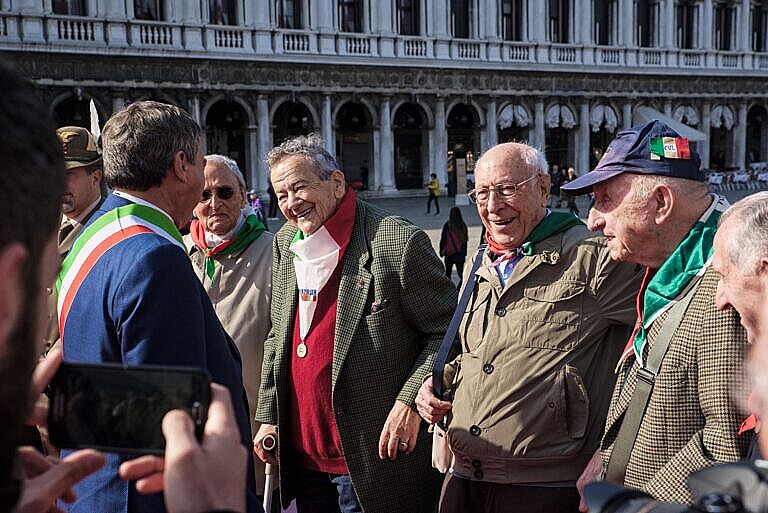
A resistance movement quickly appeared in the north.
Just like in many other occupied countries, they tried to hamper the activities of the Germans the best they could. Often the German occupiers met them with ruthless retaliation. If the Nazis couldn’t find the real culprits, they rounded up family members or just random people for summary executions.
Ideologically, two opposing sides dominated much of the resistance, both of which the fascists had forced underground. One side were communists, socialists and labour unionists, broadly speaking, the left; while the other side were Catholic conservatives who had never been on the side of the fascists.
On April 25th, 1945, the German forces in Italy surrendered. Liberation Day commemorates the surrender and the end of German occupation in Italy.
The Italian State
The Kingdom of Italy came out of the war shattered, fragmented and compromised.
The king had been a silent participant in the fascist regime for twenty years. Then the king fled the country towards the end of the war, which further delegitimised the monarchy. A referendum in 1946 favoured a republican constitution, which was enacted in 1948.
The main political forces in the immediate post-war years and in the Italian Republic were initially the two major factions of the resistance: the communist and socialist left against a conservative and Catholic right. This political dichotomy lasted until the 1990s.
Liberation Day in Venice
Venice never played a particularly central role in any of all this or what led up to it, but like any other part of Italy, Venice lived through it.
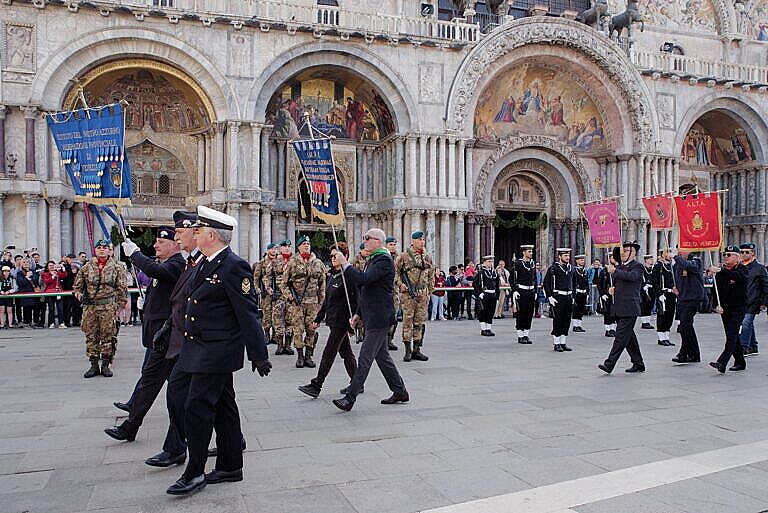
One event which is commemorated each year on August 3rd, is the murder of seven imprisoned resistance fighters on the Riva dell’Impero, now Riva dei Sette Martiri in the Castello sestiere. A German soldier had been found dead in a canal, and the occupiers blamed the resistance movement. As nobody came forth with information about the supposed culprits, the Nazis pulled seven random prisoners out in the open, force all the locals down to the place, and executed the seven men in front of their friends and family.
In Venice, Liberation Day coincides with the Festa di San Marco, the annual feast of the patron saint of Venice, St Mark.
Photos
The photos on this post are taken by myself at various Liberation Day events in Venice.
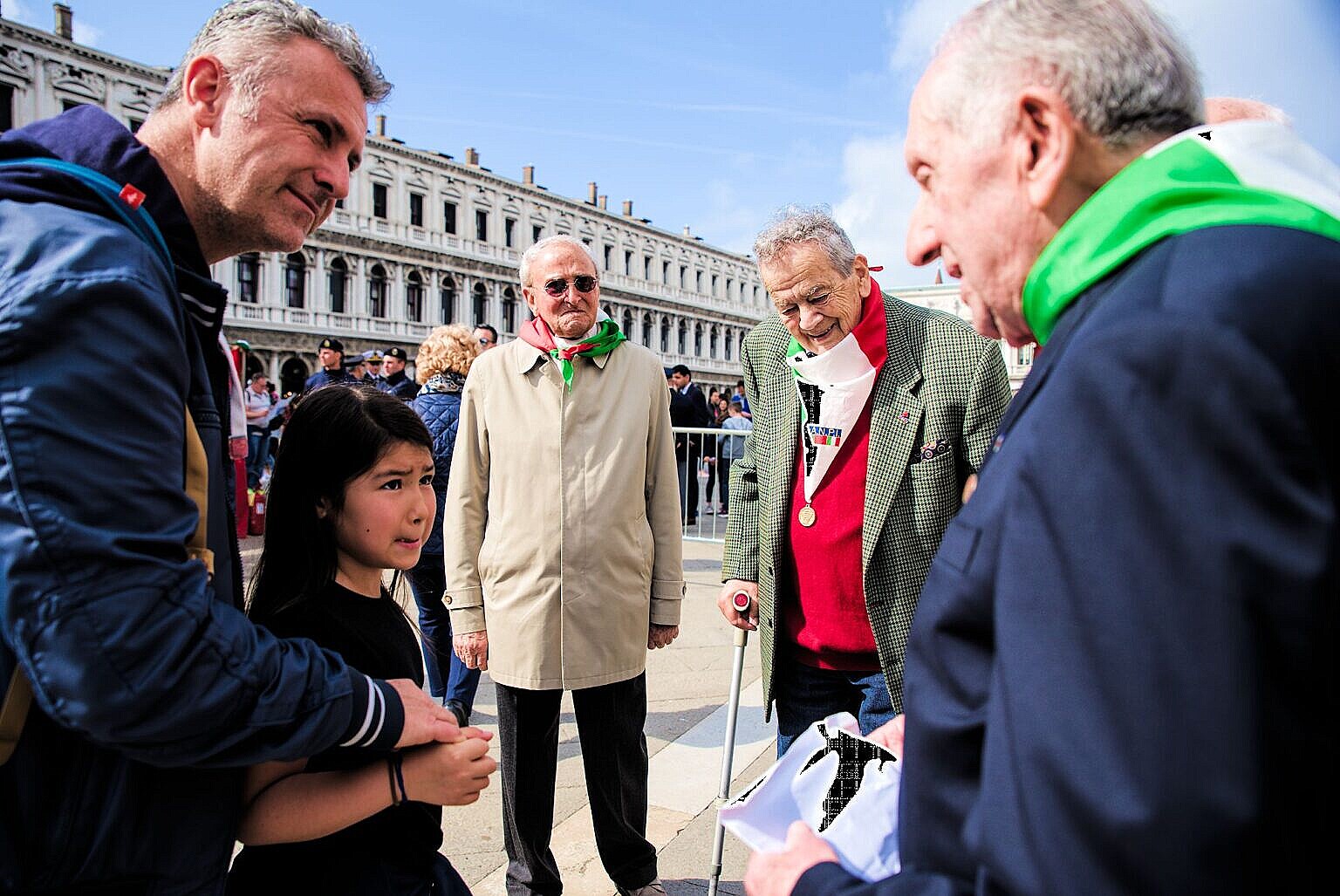
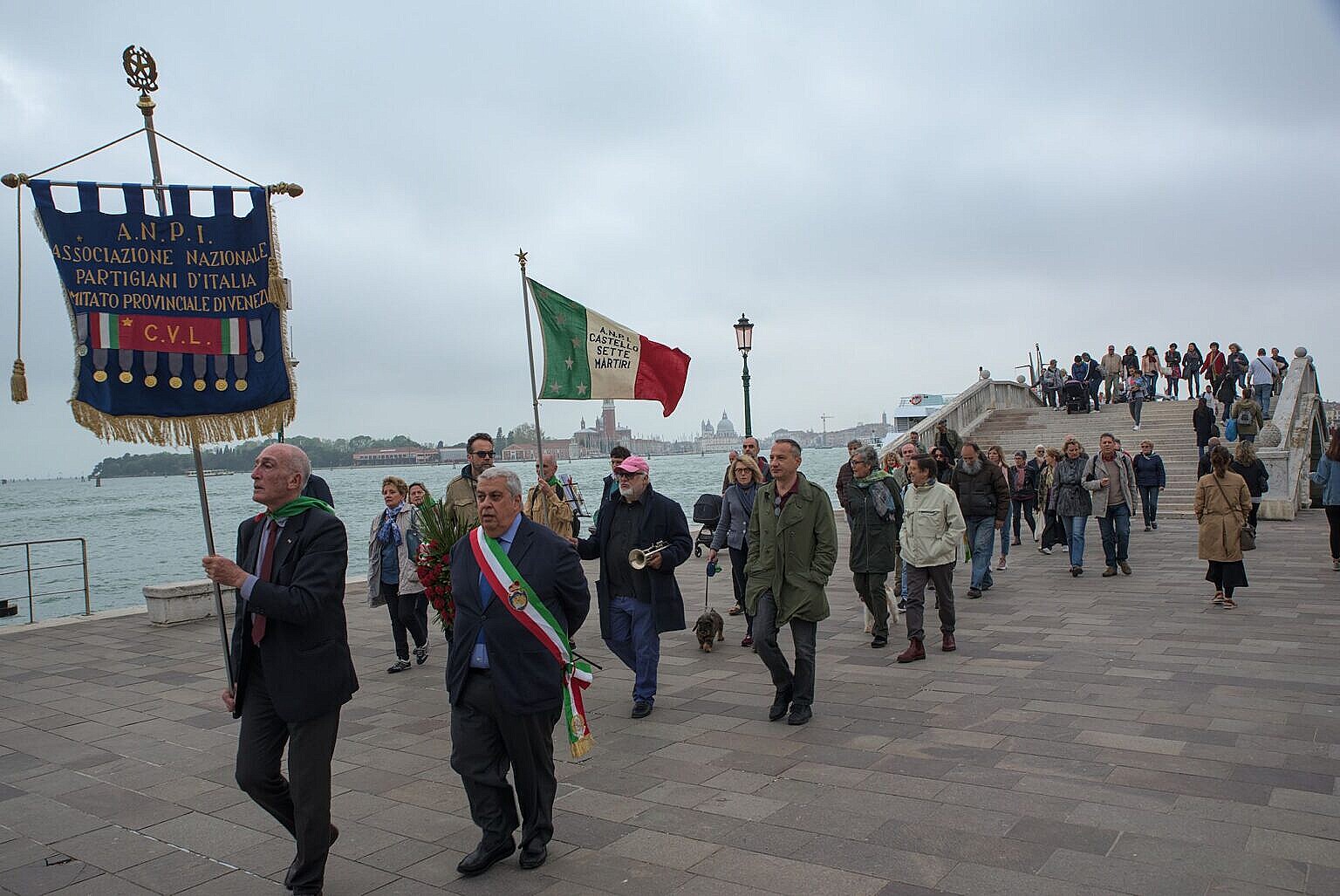
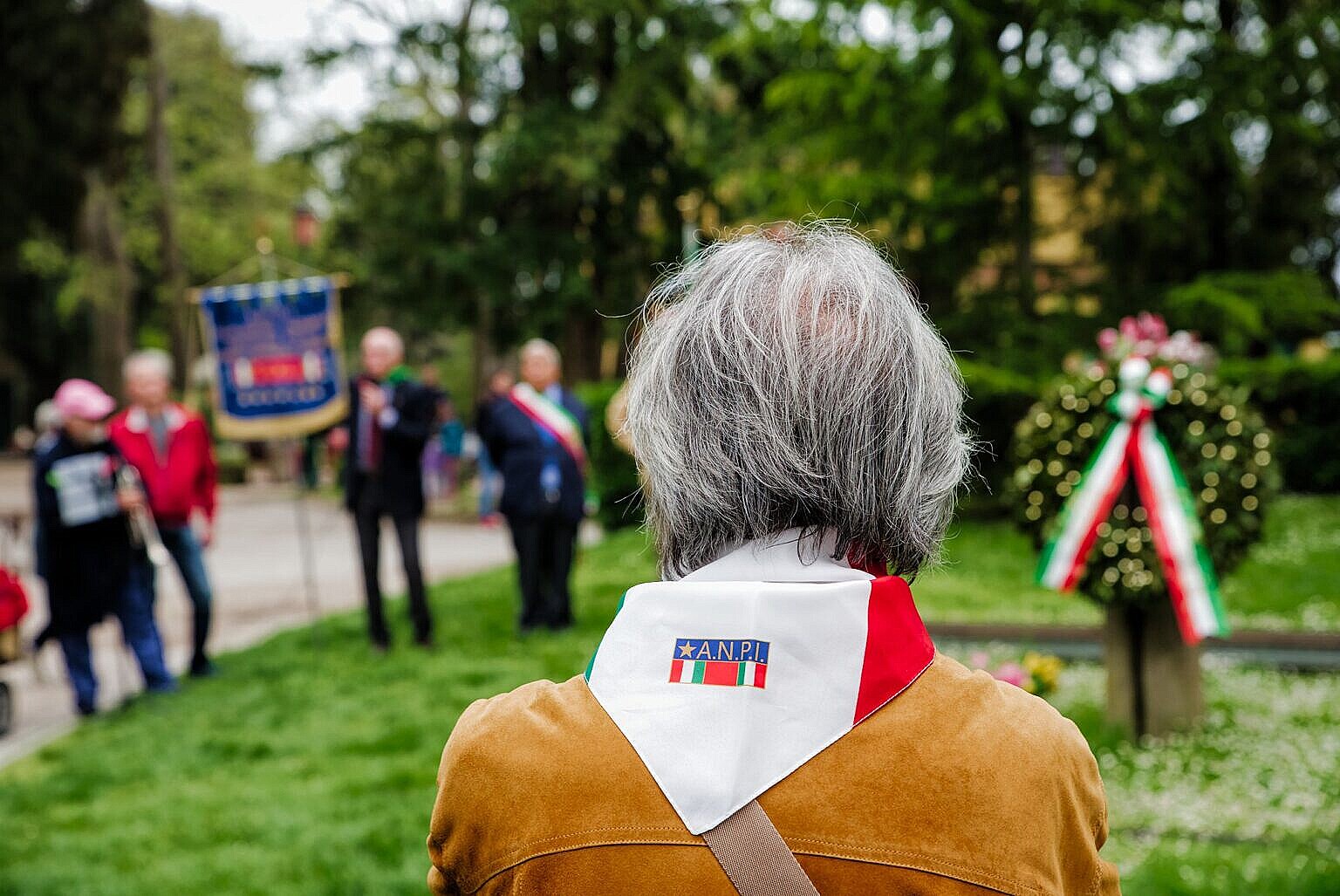

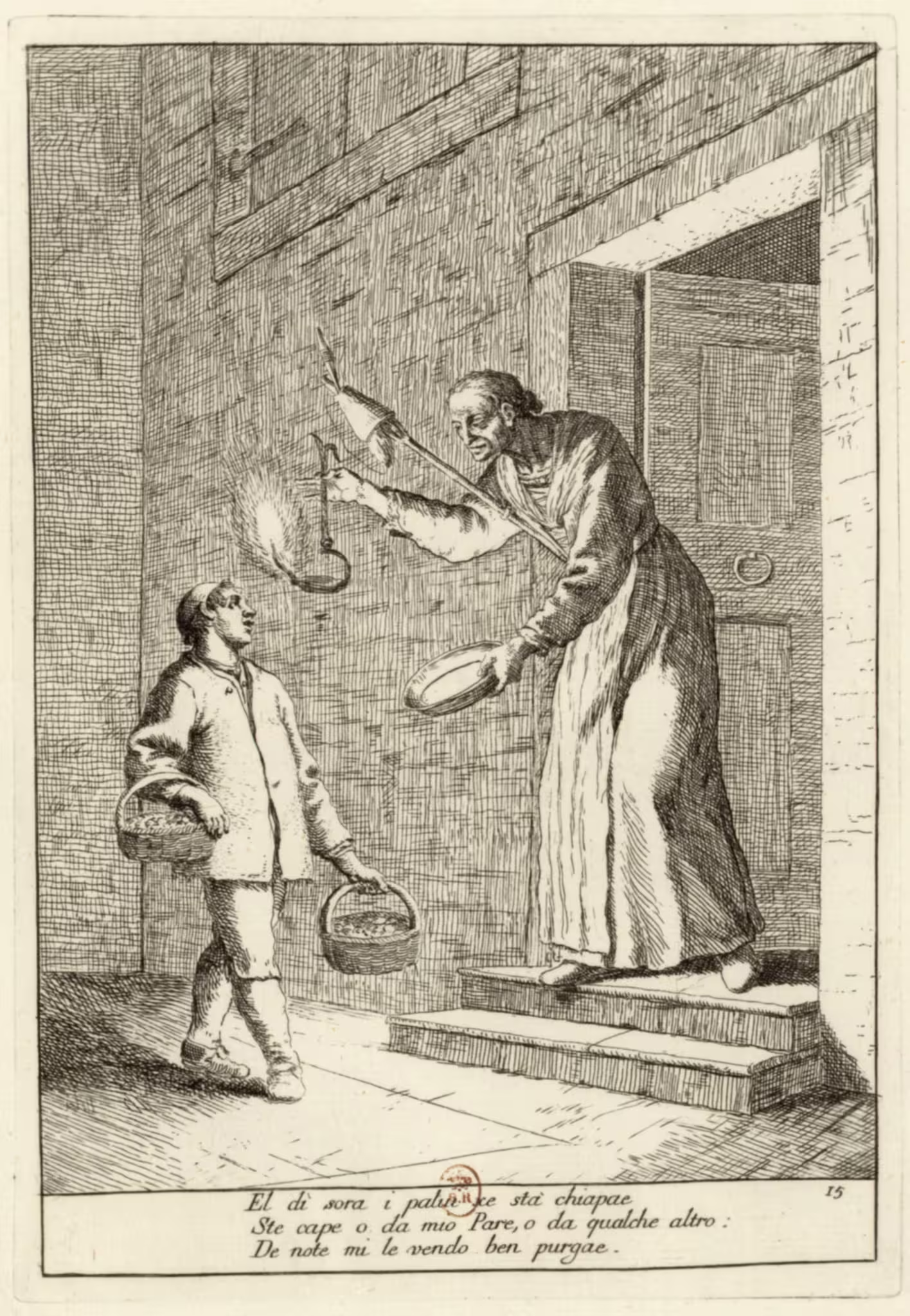

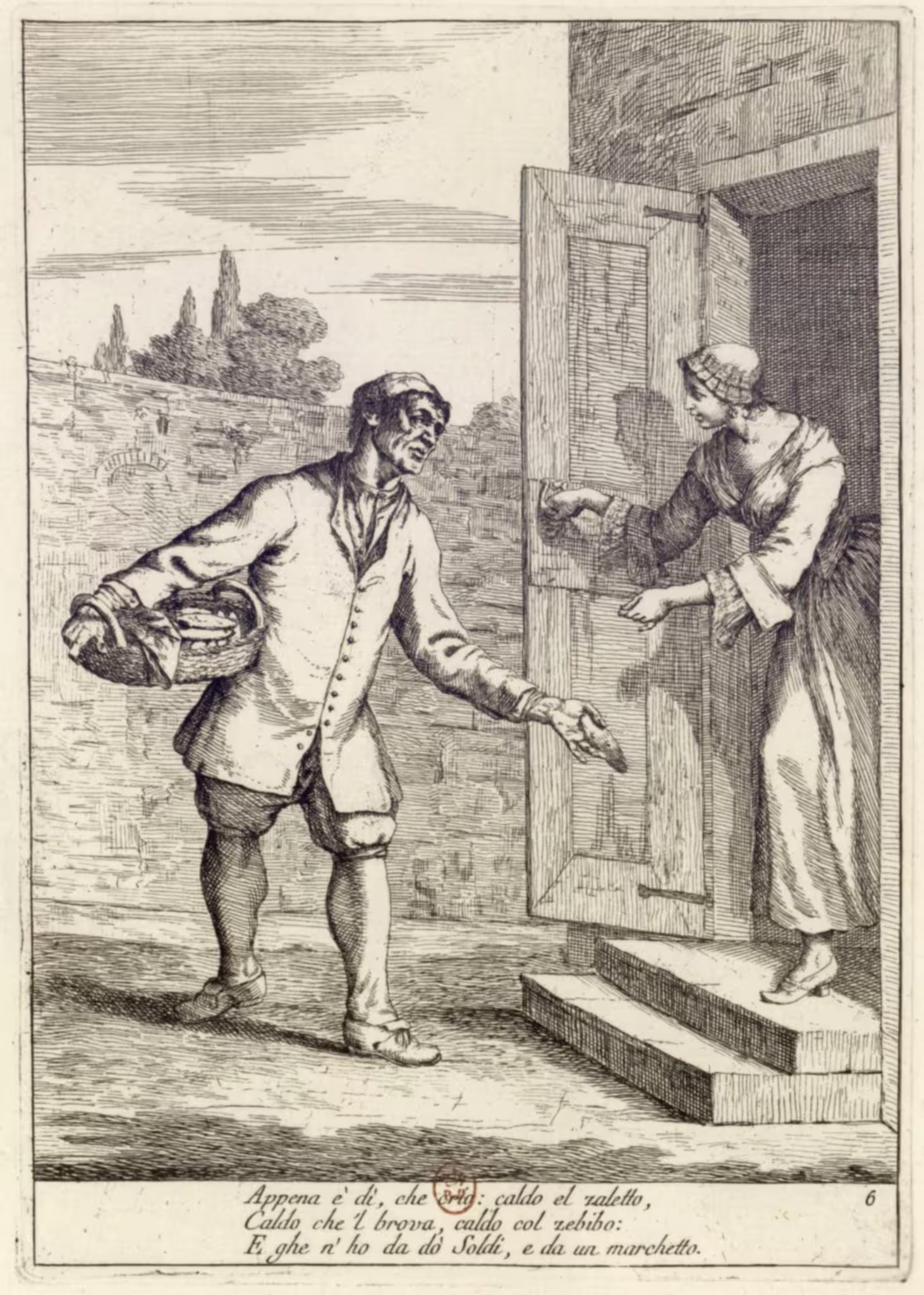
Leave a Reply